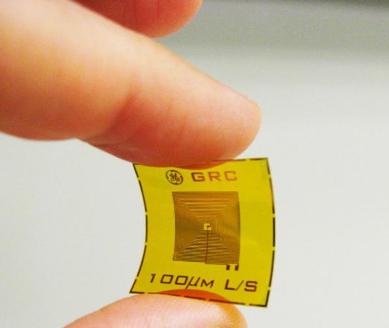A large scanner to a thin device and the size of a stamp. The development being undertaken by GE Global Research to improve explosives detection systems and hazardous substances is a major leap to integrate these devices almost anywhere and much more discreet and economically.
The GE sensor, for which they are collaborating with the Technical Support Working Group (TSWG), an agency specializing in terrorism, is wireless and does not need battery to operate. It’s actually a RFID tag that only activates in the presence of certain explosives or dangerous substances.
Passive detection of hazardous substances
The more technical details of this sensor, security, have not been unveiled by GE, but it has left the key data to understand its functioning: a new material developed by them that responds to the presence of certain “oxidizing” substances and that have been able to integrate into one of the faces of the RFID chip.
The new sensor, which has an “expiration date” for months and is very affordable to manufacture, is ideal to be placed in places of loading or transit of luggage, for example, and be dormant and undetectable until a substance then skip alarm. The reading of the chip can be at a distance of up to 3-4 meters, that will depend on the needs and the power of the antenna placed on the RFID tag.
By now the new material specializes in explosives, but from GE, they believe that it will not be long until they manage to develop a new material focused on other substances that allow passive detection of more general bacteriological or chemical risks.

Comments are closed, but trackbacks and pingbacks are open.